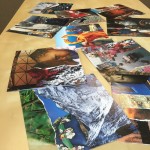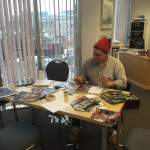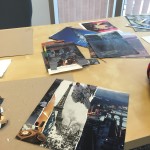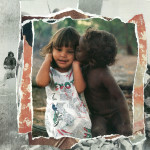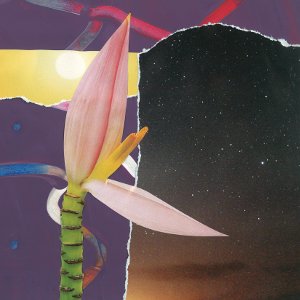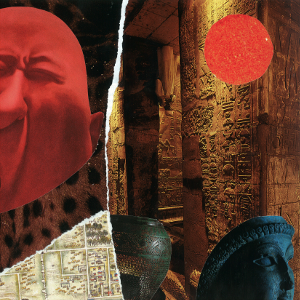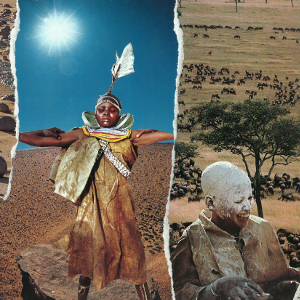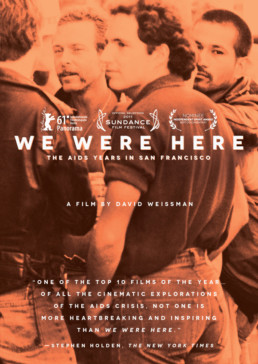An Art for AIDS International Experience
Being new to the Art for AIDS International organization, when I was given the opportunity of taking part in a workshop I couldn’t wait. Walking around the gallery and seeing the amazing artwork hung up, I wondered how all of these young people could make such beautiful work. While I had heard the main idea about the workshops, I still had no idea what to expect.
It was a morning and no one knew each other that well, so we were all rather quiet. We listened attentively as Hendrikus told us his story and more about Art for AIDS International. When it came our turn to talk about our own personal experiences is when we began to open up. What Hendrikus had done was create a safe space where everyone was on an equal playing field. Conversation flowed, and we were able to talk about all sorts of topics – from social inequality and discrimination, to the American presidential candidates. It was this openness that gave me the confidence to make my own artwork, and be proud of it as well.
Taking part in an Art for AIDS International workshop helped me to not only understand the mission of the organization in general, but understand why it is so important. I think many people distance themselves from problems of HIV and AIDS in other countries because they seem far away – they are not affecting our lives here. What we now understand is that people all over the world are faced with problems of low self-esteem and inequality. Being able to have a space where these issues can be talked about freely made an impact in my realization of my inhibitions, and I can’t imagine what it is doing for others.
Self-Image
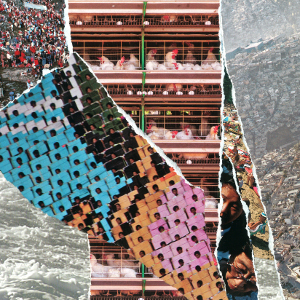
This post was written by Len Caballes, volunteer.
Like a smile, positivity is infectious and often yields tremendous benefits to those that employ it effectively. A positive self-image and knowing the very best things about one’s persona allows for healthy introspection. Think of this realization as a small drop in a pond – after a while, the ripples make their way to the rest of the space with long-lasting effects.
Art for AIDS International's Co-Founder and Executive Director, Hendrikus Bervoets, speaks of high self-esteem as a conduit to effect not only one’s daily interactions, but those of others as well – fostering positive engagements (be it personal or professional) is a gift that keeps on giving.
From a personal standpoint, a positive self-image affords people a level of respect towards each other that is sadly absent in today’s digital world. Interactions are cold and often times distant in nature – the art of effective conversations suffers from a lack of respect and connection between people.
In the corporate space, interactions are more polished but equally cold. Professional language in our Western culture is often viewed as uninviting or impolite in non-Western countries. If employees are a company’s greatest assets, what’s to say about an employee that has a negative self-image? Would you want to engage an employee that isn’t fully invested in the company? Furthermore, would you be inclined to do business with a company that engages in one-sided commerce?
An employee that is fully engaged and positively invested in their work demonstrates this through their interactions with colleagues, and potential clients alike. From my experience in the corporate world, businesses want to partner with organizations that are engaged with the work that they do – it shows a level of care and attention that again, is missing in today’s corporate arena.
I have written about my workshop experiences and lauded its positive benefits. If one was to apply that to the corporate space, an organization would see tremendous returns in a team building exercise with the help of Art for AIDS International. If you’re curious about how we can help, I would encourage you to visit our website or reach out to Hendrikus Bervoets directly.
Freedom

This post was written by Len Caballes, volunteer.
Freedom, whether it is from persecution or internal conflict is a concept that is surprisingly foreign to people today. When one thinks of the word, one may gravitate to freedom borne out of military conflict or even different forms of persecution.
In this case, I am writing about freedom from the perspective of someone getting a glimpse of freedom from internal conflict. I volunteer for Art for AIDS International, an organization that hosts art workshops, raises awareness about the AIDS epidemic, and encourages the younger generation to express their inner creativity on the way to raising our global consciousness about the persistence of the AIDS epidemic.
This piece is inspired by my experience at one of the workshops that Art for AIDS International was kind enough to provide to its volunteers. The time I got to spend getting to know its founder, Hendrikus Bervoets was profoundly enlightening and liberating.
Our workshop centred around collage art and Hendrikus talked us through the process and made the experience as effortless as possible. His rule for the day was to not ‘overthink’ the process – rather, just let the moment dictate what story our piece would be about.
This simple rule for me was a very important element in creating my piece. To use art (whatever form it may be) as the medium for expression is a powerful form of therapy. Hendrikus in fact encouraged us start from ‘where we were’ at that very moment of the day – instead of being constrained by rules, he moved away from that convention. The US National Library of Medicine and The National Institutes of Health mentioned in their site that, “Art as a language of therapy, combined with verbal dialogue uses all our capacities to find a more successful resolution to our difficulties”.
I want to stress that Art for AIDS International does not provide any sort of therapy, but rather the experiences during the workshops provide an avenue for expression – an experience that is both empowering and liberating for any individual. This simple slice of freedom had a tremendous effect on my overall mindset for that day – even as I write this and recollect my experience I am brought back to that feeling of empowerment and liberation when one is afforded the choice to freely express themselves.
Even if you’re not artistically inclined, but are driven to donate time to this worthy cause, I highly encourage you to partake in one of the organization’s workshops or contribute to its online presence. Often, we forget that freedom comes in many forms – the small respite my experience provided me did wonders for my mental mindset, I’m quite confident that it will do the same for you.
Measuring Our Impact at Art for AIDS International
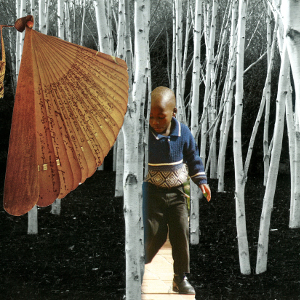 This article was written by long time valued volunteer Brittany Stares
This article was written by long time valued volunteer Brittany Stares
If the impact of Art for AIDS International was measured only in terms of beautiful artwork produced, there would be no question that the organization is successful. Its head office and gallery are constantly filled with stunning limited edition prints, rotated on a regular basis, showcasing the powerful creativity from students even as young as twelve years of age.
The organization's work, however, goes far beyond art. In addition to raising funds for initiatives providing care for women and children affected by HIV and AIDS in Africa, Art for AIDS International has, for fifteen years, used unique collage-making workshops to: educate young people about HIV, AIDS and other social issues, boost self-esteem, and connect students to the transformative power of creativity and self-expression. Each workshop delivers important, potentially life-saving information about HIV and AIDS.
It can be difficult to assess the impact of this information. Sometimes, the communities we visit lack the resources or facilities to measure the local prevalence of HIV and AIDS. More often, widespread stigma against HIV-infected individuals, and the fear of being stigmatized, pose the greatest barrier to testing. As such, we often cannot see if rates of testing, infection or even treatment change after an Art for AIDS workshop.
One way we gauge our impact is with evaluation forms, completed by each workshop participant. Consistently, we are rated 90 and above out of 100. For many younger participants, their enthusiasm is directed towards the art portion of the workshop. While it is lovely to nurture the dreams of aspiring artists, the real hope – at least for me, as a volunteer – comes from reading the words of students, usually a little older, who have absorbed the information about HIV, AIDS and self-esteem, and who are committed to using this information to help themselves and others. From participant reviews of workshops in South Africa in March 2015, for instance: “[I learned that] I should get tested each and every month,” “I will now speak up and tell the community about HIV and AIDS,” “This workshop taught me something that I will never forget in my life,” and “With this workshop we can build a bright future for ourselves as youngsters and we can be a good example in our homes and community.”
This is positive enough, tremendously so. But another indicator of our impact – a sign that our work resonates long after the fun and novelty of collage-making wears off – comes from the many young people who reach out to us from all corners of the globe after participating in one of our workshops. Here is a segment of an email received by Art for AIDS International Director Hendrikus Bervoets from one such student:
“Dear Mr. Hendrikus,
... I just want to say thank you so much for your fantastic workshop today on collage[-making]. I learned a lot from you and how interesting collages can be if you combine imagination with passion...
Your ideas, views of life and ideals have greatly touched me and I just want you to know that I share the same ideals and views as you about self respect, confidence, passion, kindness and life. You make me want to strengthen all these views, be more independent about my decisions and be a better person like yourself.
... So thank you again for stepping into my life and becoming an inspiration to me. You are truly a unique individual that has inspired this young mind. I hope to become a splendid and exceptional individual like you and accomplish as much as you have in my life since it has always been a dream of mine to help people.”
From another email, this one nearly a year after the workshop was conducted:
“...I'm glad to tell you that I have successfully completed my high school and AS level I was doing last year. Since I'm free for a few months now, I would like to dedicate my time to helping anyone I can, so you, your incredible efforts, story and Art for AIDS came to mind.
I am still very inspired by you and what you do, even though we only met once for a few hours. Thank you again for coming to my school...”
We know we cannot quantify some aspects of our impact at Art for AIDS International. Sometimes, though, the surest signs of success come from things you can't quantify at all.
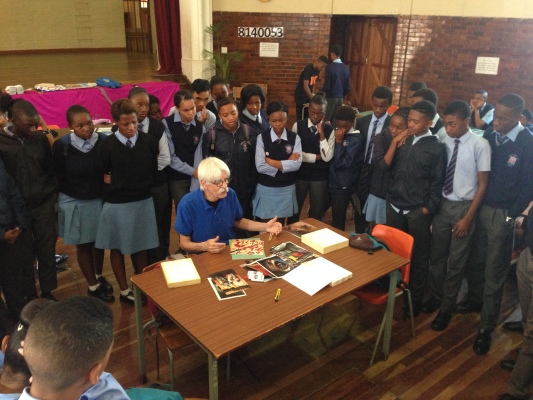
Self Esteem, Art, and the Fight Against HIV and AIDS
This post was written by Brittany Stares, Volunteer for Art for AIDS International
Building self-esteem was not always part of what Art for AIDS International does, Director Hendrikus Bervoets tells me one afternoon. It came up a few years ago when he was asked to give a keynote address in Botswana on the topic of bullying. At first, he says, he didn't know what to talk about. Then, the more he thought about it, the more connections appeared between self-esteem and his work with Art for AIDS International.
Now, building self-esteem is a cornerstone of what the organization does. He explains to me the many links between self-esteem and the HIV and AIDS fight: individuals need strong self-esteem to get tested, learn their status, and pursue treatment in the face of widespread discrimination. Low self-esteem can contribute to the risky behaviours that spread HIV, such as IV drug use and unprotected sex. Building self-esteem, while perhaps not enough to end AIDS-related bullying based on psychologists' new understanding of bullies, is still pivotal in creating healthy interpersonal relationships, healing the damaging legacy of bullying for victims, and challenging the HIV and AIDS stigma. The need for strong self-esteem even reaches educators if they are to share their experiences about self-worth, gender violence, and health with students – and building the capacity of educators is part of Art for AIDS International's “Train the Trainer” program.
For young people, building positive self-esteem starts lifelong change. Art, Hendrikus says, is a great way to do this because it's fun. “Because of what we ask students to do [to select images at random and not overthink], it makes it very easy to create beautiful artwork,” he explains. I can speak to that. Artistically challenged enough that even a straight line with a ruler seems hard, I have participated in an Art for AIDS International workshop and created collages that now hang on my wall with pride. For workshop participants, they create not only beautiful art, but art that is taken seriously and treated with respect – gorgeously displayed in showings around the world and sold on the Art for AIDS International website.
Hendrikus now starts every workshop with a talk, one that includes not only important, potentially lifesaving information about HIV and AIDS, but also his own experiences with low self-esteem. “It helps young people to become aware of the difference between low self-esteem and healthy self-respect,” he says, “[It brings an] awareness that they're not the only ones with low self-esteem... many young people have it, but we seldom talk about that.”
At these workshops, Hendrikus says young people change in front of his eyes. “You find them becoming passionate and excited about what they're doing,” he tells me. “That is really pretty universal, whether the workshop is in Canada or South Africa. Wherever we go, we see the same response.”
In the fight against AIDS, the role of self-esteem is often overlooked. This is where organizations like Art for AIDS International make such a difference: they deliver crucial information about HIV and AIDS to the community, but they also strengthen the foundations that will help individuals use this information for themselves and others. I know from reading workshop reviews by participants in Botswana and South Africa that the seeds planted in these sessions will go well beyond the HIV and AIDS fight: they will inspire community service, connect family members, and help individuals pursue their dreams. Self-esteem is what puts the roots in grassroots change.
A Return to Hopefulness
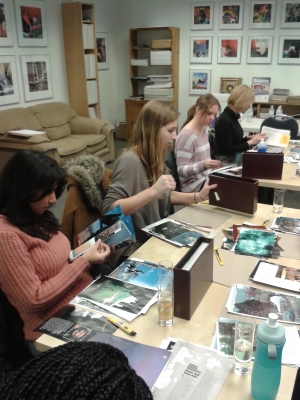
This post was written by Sarah Barzak, volunteer for Art for AIDS International in London, Canada
Social justice has been and continues to be a concept I keep in the back of my mind. Immigrating to Canada at the age of five, social issues were heavily discussed at the dinner table and watching the 10pm news was a daily activity in our household. All throughout high school I participated in social justice, multi-cultural and volunteer service clubs. Participating in those activities allowed me to bond with like-minded people and also kept me engaged with current issues. More importantly, it made me realize that there’s always a position to play in the grand scheme of things. However, once in university, studying the complexities of social issues made me reassess my views. I started to label my thinking as ‘idealistic’ and became skeptical of how my actions could contribute in solving social problems. Injustice seemed to be everywhere: locally and globally; and seemed too big to tackle. Now, instead of feeling hopeful, I felt angry. I was angry because I was under the impression that not enough people cared, not enough people were informed and too many were ignorant. The culture of the university lecture played a big part in cultivating my skepticism. The constant critiquing and analyzing of theories was brought out of the classroom and into my day-to-day life to which those feelings felt inescapable. After some time, I thought to myself I wasn't happy with my current attitude and I missed feeling hopeful. I missed encountering an issue and thinking: “hey, what can I do to be a part of the solution” instead of ‘conceptualizing the complexities’ as I would in class.
Volunteering for Art for AIDS International was a step I took in trying to bring back that hope. When I came into the volunteer workshop, it was my first time interacting with the other volunteers and I was moved by the honesty and openness of the environment. I felt overjoyed because it was my first time since graduating high school that I felt that level of warmth and comfort in my surrounding. What fascinated me the most about the organization was its way of having art work as a vessel to carry out discussion. I especially admired the organization’s role in working with young people in hopes to evoke consciousness of both social and personal matters. Making collages brought out a different mode of thinking in which I didn’t have to rationalize, I could as Hendrikus put it: “play”. I think part of working with art is allowing your mind to think freely in order to showcase alternative perspectives and modes of expression. Something about not thinking critically felt therapeutic and initiated a feeling of ‘at-one’ with myself. This was an important step in my self-reflection process because it served as an opportunity to regenerate. Also, listening to Hendrikus’ story made me realize that my experience is indeed a part of a journey. Though I may experience ups and downs, disappointments and accomplishments, it is important to always be honest with myself. All in all, I’m excited to work with Art for AI International, not only to see how a charitable organization operates but also to add to my life long learning experiences. 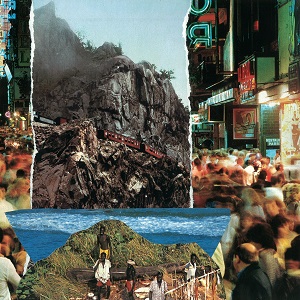
Unlocking Emotions Through Art
This blog was written by Brittany Stares, volunteer
I volunteer in the Art for AIDS International gallery, a place that, despite the beautiful artwork on the walls, doesn't always convey the depth of the organization’s work. My first experience with Art for AIDS International was reviewing evaluations of the workshop from Botswana and South Africa to draw out useful content for social media. It was a startlingly moving experience. Students were not describing the workshop as merely “fun” or “educational,” they described it – over and over again – as life changing. An immeasurable source of confidence. A first step into helping their family and community.
Last month, Hendrikus Bervoets, Executive Director for Art for AIDS International, hosted one of these workshops for volunteers. Art is an area I enjoy the way a child enjoys splashing in the pool: with sheer delight, even though I’m terrible at it. As expected, the workshop taught me a lot about HIV and AIDS (enough that I promptly shared stats about the disease via Facebook right after), as well as the background of the organization. But it also taught me something about myself, and the power of art.
During the workshop, torn paper became art at my fingertips. I felt a fierce attachment to the work I was creating. More, I felt a sense of pride; it was the first thing in weeks I’d felt pride in. I felt disappointment when my collage was taken away, even to become a print. That night, I couldn't sleep. I tossed and turned and felt a storm of emotions unrelated to the workshop – anger, hurt, unhappiness, frustration. I knew enough about feelings to recognize that this wasn't bad. Art, like play therapy, can allow us to access feelings and emotions we may not be immediately aware of. It can allow us to tap into anything from built-up stress and tension from the day to day to major grief and pain from past trauma. This might be unpleasant to feel, but it’s important – without feeling it, we cannot heal it. Our feelings deserve “the dignity of our attention,” and there is is nothing worse, or more damaging in the long run, than blocking off what we feel.
My feelings that night were large and difficult. They were rooted in questions about where my life was going, if I was making the right choices. These are feelings that, at this point in my life, will be around for a while, and healing will be an ongoing process. But today, as I saw my collage as a finished print, I felt peace.
“Inspiring Confidence & Compassion one Collage at a Time”
A Response to a TED Talk by Kristen Ashburn
The following post was written by Marie-France Roche, student intern at Art for AIDS International.
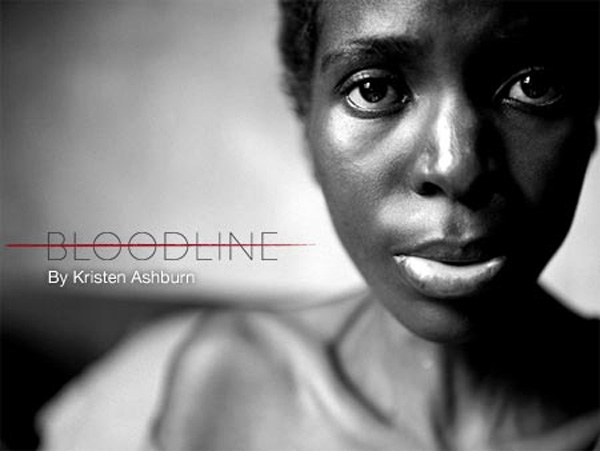
“When I first arrived in beautiful Zimbabwe, it was difficult to understand that 35 percent of the population is HIV positive. It really wasn’t until I was invited to the homes of people that I started to understand the human toll of the epidemic.”-Kristen Ashburn
In this inspiring TED talk, Kristen Ashburn, a talented documentary photographer, shares her experiences of her visit to Zimbabwe. Ashburn met and photographed several people affected by the HIV and AIDS, many of whom had little hope of survival. Her most devastating photographs depict young people affected by AIDS. One boy, named Herbert, is pictured with his grandmother, so frail that he is hardly able to hold himself up. Herbert lost both his parents to AIDS, and eventually lost his own life to the disease. Ashburn’s photographs capture the too-often traumatizing reality of AIDS in the most heavily affected region of the world.
At Art for AIDS International, students participating in workshops translate their insights into the production of unique collage artwork. Although these pieces do not always directly reflect the effects of the AIDS epidemic, they inspire students to engage in the cause by responding to what they've learned in the workshop. Ashburn’s work brings individuals closer with those facing adversity. Our workshops do not only create awareness about the prominence of AIDS in Africa, but also bring the students closer to the cause through participatory involvement in producing this artwork.
Art can serve as a powerful medium to depict the effects of AIDS, and to engage young people in an important cause. At Art for AIDS International, our work is directly connected to passionate individuals who are involved in AIDS prevention and awareness, and can act as an agent of change by connecting people around the world to the organization.
You can see more of Ashburn’s work here.
Some Thoughts on We Were Here
The following post was written by Marie-France Roche, student intern at Art for AIDS International.
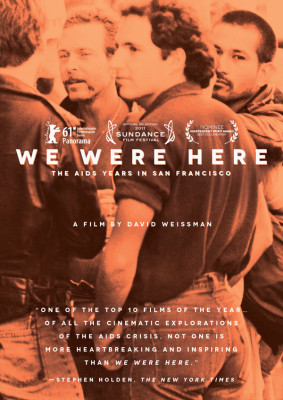 I recently watched the film We Were Here, a 2011 documentary directed by David Weissman. The film explores the AIDS epidemic in San Francisco in the early eighties. Weissman's piece follows five individuals affected by the AIDS. To me, the most powerful testimony was one by an artist named Daniel Goldstein. He struggled with AIDS throughout his life, losing two of his beloved partners to the disease. He founded Under One Roof, a gift shop where all profits go to educational, medical and support services. In the film, Goldstein explains that volunteers at the shop would often be AIDS patients, and come in once a week to volunteer. Their work at the gift shop, as Goldstein explains, served as the patients’ social life.
I recently watched the film We Were Here, a 2011 documentary directed by David Weissman. The film explores the AIDS epidemic in San Francisco in the early eighties. Weissman's piece follows five individuals affected by the AIDS. To me, the most powerful testimony was one by an artist named Daniel Goldstein. He struggled with AIDS throughout his life, losing two of his beloved partners to the disease. He founded Under One Roof, a gift shop where all profits go to educational, medical and support services. In the film, Goldstein explains that volunteers at the shop would often be AIDS patients, and come in once a week to volunteer. Their work at the gift shop, as Goldstein explains, served as the patients’ social life.
Goldstein's initiative reminded me of what we do at Art for AIDS International: Individuals can bond over artwork, and share their stories and experiences with AIDS. At our workshops or in our gallery, there are always people who have dealt with AIDS to some degree, even if we are not aware of it. By creating a common place dedicated to creating art for a wonderful cause, we can also support those close to us who may have had difficult, life-changing experiences with AIDS.
Goldstein’s artwork has also been hugely successful. "Medicine Man II" is the second project by Goldstein for Make Art Stop AIDS. Using the medication bottles of South African individuals living with HIV, the sculpture also incorporates dozens of brightly colored, hand beaded spindles, created by the craftspeople of the UMCEBO Trust.
You can check out more of his art at: http://www.danielgoldsteinstudio.comand here is the trailer for We Were Here.
